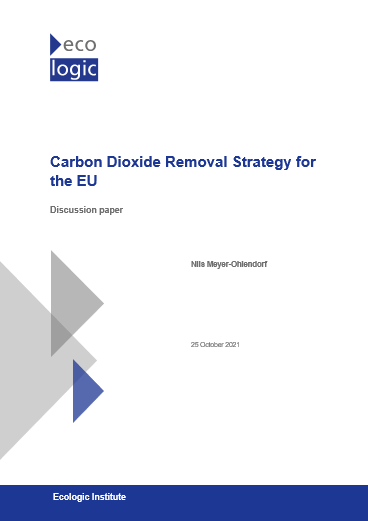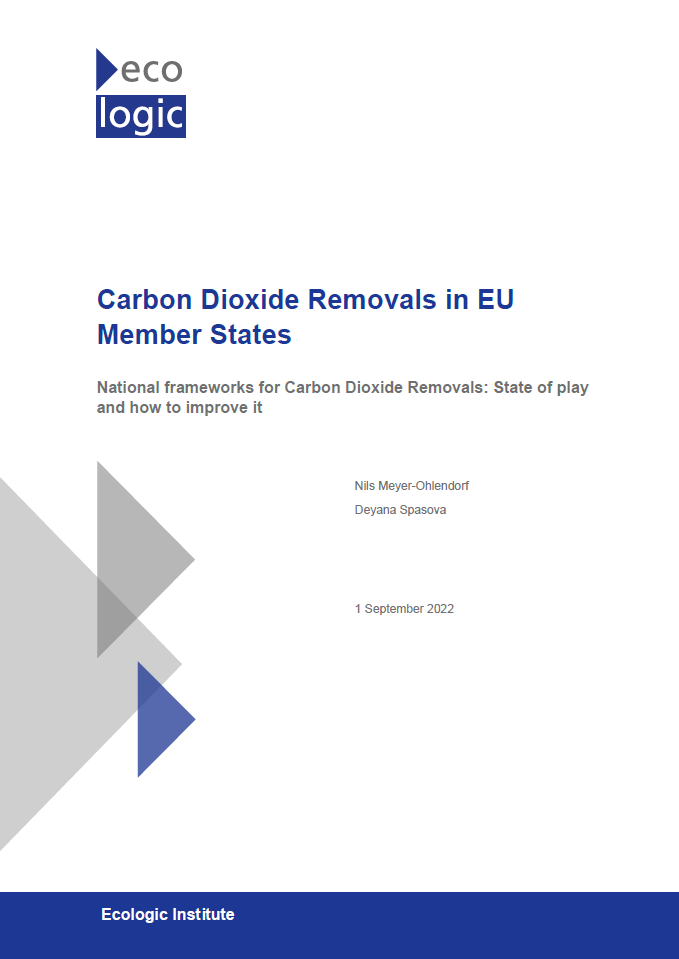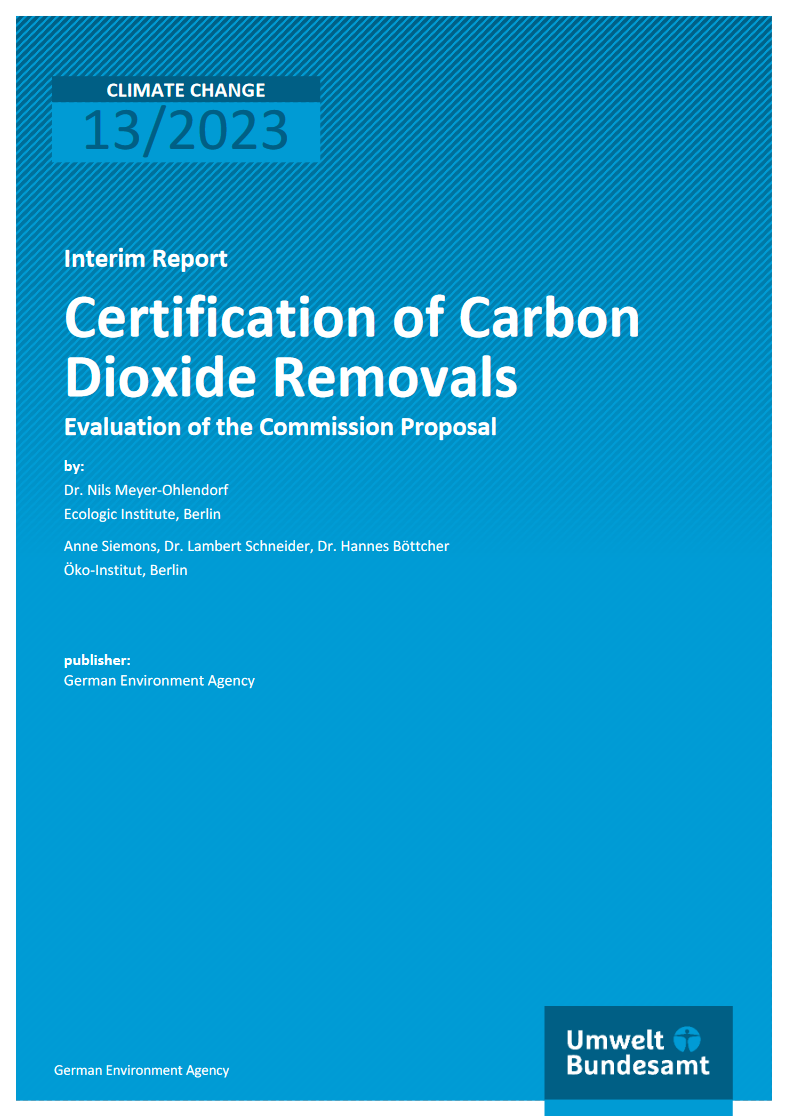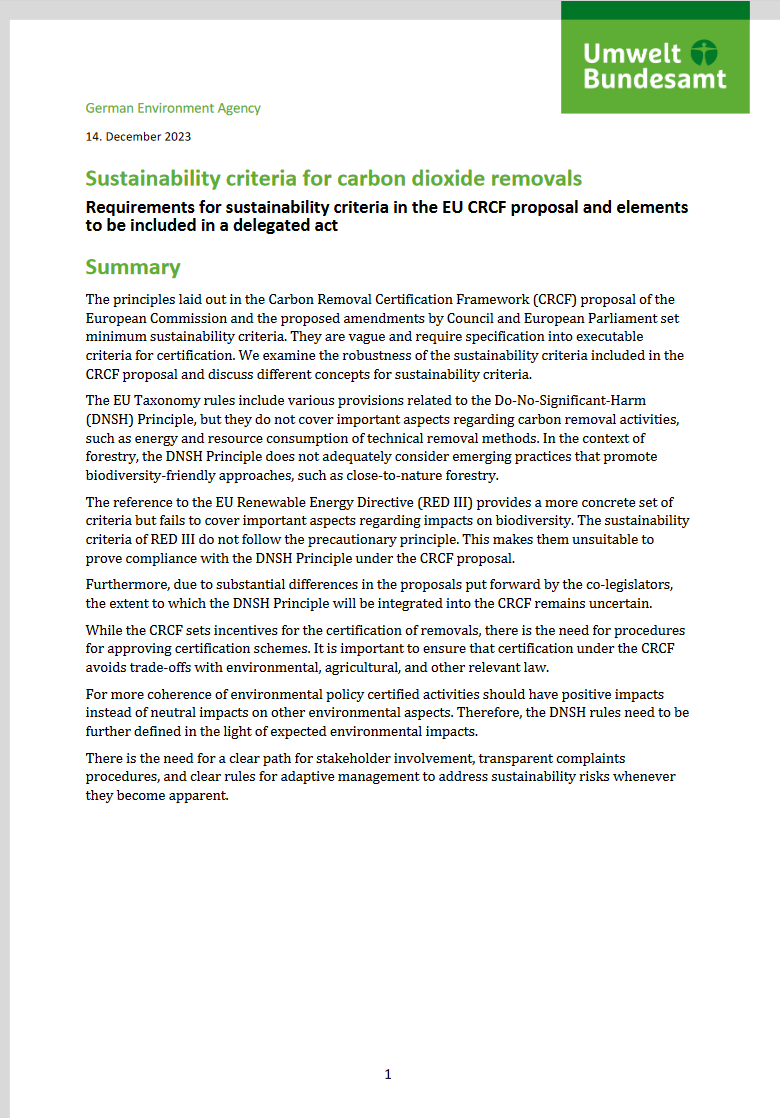Scaling up Carbon Dioxide Removals
Recommendations for navigating opportunities and risks in the EU
- Publication
- Citation
European Scientific Advisory Board on Climate Change (ed.) 2025: Scaling up carbon dioxide removals. Recommendations for navigating opportunities and risks in the EU. Luxembourg: Publications Office of the European Union
This report explores options for scaling up carbon dioxide removals (CDR) in the EU, considering respective costs, risks and opportunities. This assessment, covering both carbon sinks in the land sector (temporary removals) and technological solutions (permanent removals), involves analyses of the status and potential of carbon dioxide removals in the EU, key policy needs and gaps, as well as policy recommendations for a robust EU governance of carbon dioxide removals. Ecologic Institute supported the preparation of this report through analysis on the mechanisms to address non-permanence, additionality, and liability, as well as data collection on existing regulatory requirements for CDR.
The ESABCC makes nine recommendations to EU policymakers for rapidly scaling up removals:
- Set separate legally-binding targets for emission reductions, permanent removals and temporary removals.
- Develop robust monitoring, reporting and verification (MRV) systems and enhance transparency regarding the contribution of removals to achieving EU policy objectives.
- Reverse the decline of the land sink and ensure sustainable sourcing and use of biomass.
- Accelerate innovation through strengthening regulatory signals and expanding funding for technologies.
- Secure sufficient CO2 infrastructure by increasing coordination, boosting investment and enhancing strategic planning.
- Price permanent removals through progressive integration into the EU ETS under strict conditions.
- Price temporary removals through new instruments to price emissions and reward removals in the LULUCF sector.
- Recognise the extended emitter responsibility, requiring today's emitters to contribute to the future removals of GHGs.
- Strengthen EU climate governance and institutional capacities, supported by reducing carbon leakage and enhancing global climate ambition.



